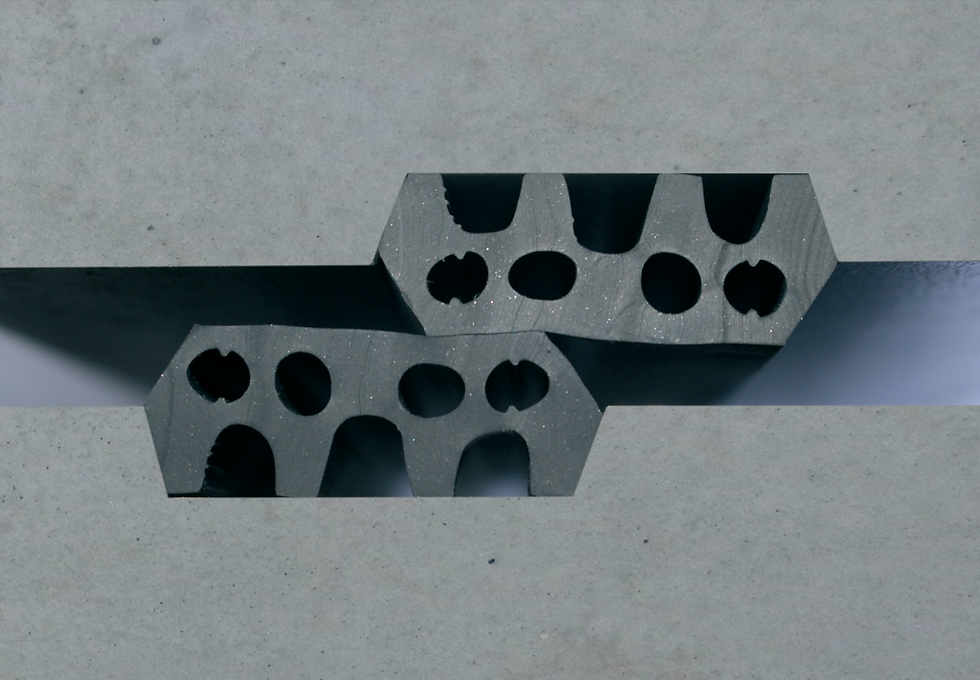TBM selection - EPB and Slurry
- Si Shen

- Oct 25, 2021
- 4 min read
There are a wide variety of different types of TBM available in the market. Each of them is designed to tackle a specific type of ground conditions at maximum efficiency (high speed and low cost). For ground conditions that fall outside the designated ones for each, they may still cope with some adaptations but the efficiency certainly drops. Selecting the ‘right’ TBM is all about maximising efficiency and minimising risk for a given situation.
TBMs generally have the following functions:
Excavating the ground
Removing excavated material
Supporting the ground
The following factors come into play in the selection of TBM:
Geology and ground conditions. TBM wants consistent ground conditions. In mixed and changing ground conditions, the machine may run into something that it can not operation in a safe or efficient manner. To cope with the change in situation, the machine would have to go through (costly) changes to adapt.
Risk appetite and mitigation. If the consequence of adverse risk event materialising is bearable, and if mitigations can be implemented effectively to control the risk appetite can be larger.
Local experience and availability of supplier
Cash flow
Tunnel diameter and alignment
Site restrictions
Shielded tunnelling
Tunnelling does not always need a shield – a ground that has naturally high stand-up time (the duration of the ground remaining stable without structural support) without problem of groundwater normally does not. However, particularly in ‘soft’ ground conditions, particularly in an urban area, a shield that cancels/balances off the earth pressure at the tunnelling face is extremely important, as it helps limit the ground movement and damage to existing assets by preventing the ground from collapsing into the excavation.
Face pressure support can be achieved by one or more of the following measures:
Excavated material – this type is typically called “Earth Pressure Balance (EPB)” machine. It uses the excavated material itself, mixed with conditioner to make it more fluid, to balance the pressure. Depending on the ground, the conditioner can be: water, bentonite, foam and polymer. The purpose of the conditioner is to 1) for clay, reduce the ‘stickiness’, which causes blockage 2) for coarse-grained soil, make the soil ‘smoother’, reducing its friction and abrasiveness 3) improve the fluidity of the soil, making pressure control easier 4) for coarse-grained soil, reduce permeability of the soil
Hydraulic pressure – this type is typically called “slurry” machine, because the fluid typically takes the form of slurry (bentonite), which is water with suspension of fine clay particles. The slurry as 3 functions: 1) balance off face pressure 2) penetrates the ground forming a ‘filter cake’ that reduces water ingress 3) mixing with the excavated spoil making it more fluid and easier to be transported away.
Compressed air – an air-tight chamber with high pressure is located at the tunnelling face. No shield is required.
Mechanical support – stiff supporting elements such as steel plates can be installed at the cutterhead of the TBM. This is similar to timber boarding in traditional tunnelling methods.
The choice between EPB and Slurry TBM
For major tunnelling projects in soft ground, the choice of the TBM usually comes down to a battle between EPB and slurry, with occasional use of multi-modes/hybrid machines.
Ground particle size - Slurry TBMs are mostly for use in coarse-grained ground, whereas EPB TBMs are mostly for use in fine-grained ground (such as clay). For the slurry machine, the finer the soil, the more difficult it is the separate it from the slurry. This leads to more difficulty in the re-use the bentonite, and the reduction in water content of the muck to be disposed of. The more watery the muck is, the higher cost is associated in the transportation; in the worst case, special trucks have to be used. In contrast, in the case of EPB machine, fine-particle soil helps forming a plug in the screw conveyor, therefore helping the control of balancing pressure.
Ground water – Slurry TBMs are better capable in dealing with higher permeability of the ground
Ground movement – although both EPB and slurry machines are very good at controlling ground movement, Slurry machine is arguably better (marginally) in this respect, due to its higher accuracy in the control of balancing pressure.
Production rates – EPB has greater potential for higher production (advancement) rates. EPB machine has the flexibility to operate in open mode in stiff ground with little water ingress.
Muck handling – muck from EPB can mostly be transported straightaway whereas for slurry machine it has to go through separation plant.
Power requirement – slurry machine normally less power (torque) requirement for the cutterhead
Upfront cost – EPB machine usually has lower cost
Work site – EPB usually requires a smaller site and launch shaft. Slurry machine requires slurry treatment plant, bentonite storage and muck separation plant
Operation – the pressure control for slurry machine is more systematic hence easier to understand and operate
Maintenance – Slurry machine usually has less wear thus less maintenance interventions


The multimode/hybrid TBM
EPB and Slurry machines do not necessarily have to be mutually exclusive. A TBM can be configured to include function for both modes. Multi-mode TBMs offer the flexibility to adapting the changing ground conditions. Some machines offer the capability of switching between EPB, slurry, open face and compressed air, to cope with all foreseeable ground conditions during the drive. However, the conversion typically can take between days and weeks to complete, during which is the TBM’s downtime (no production). Therefore the conversion has to be limited to as few times as possible, and typically only 1-2 times during the drive. Also, the upfront cost for procuring such a complex TBM is naturally higher compared to its peers.




Comments